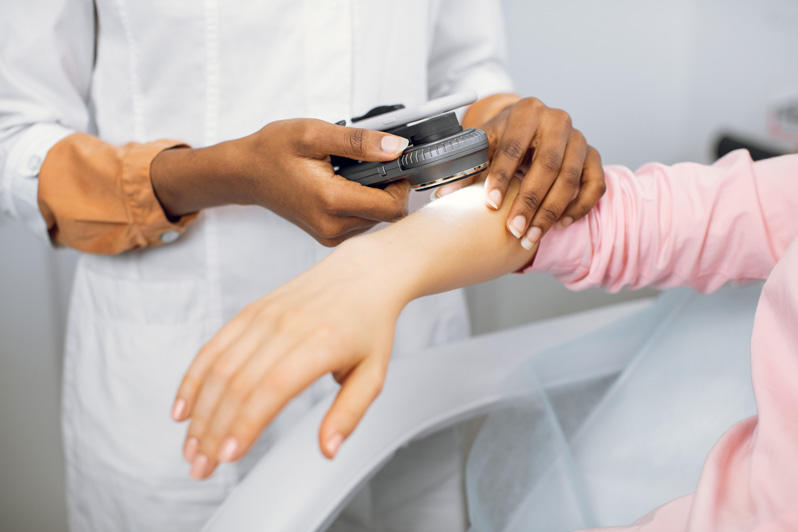Detect early signs of skin cancer with routine screenings.
Detect early signs of skin cancer with routine screenings.
Blog Article
Navigating Skin Cancer Cells Treatment: The Vital Duty of Mohs in Modern Dermatology Practices
Skin cancer cells, a difficult medical diagnosis, usually leaves individuals grappling with many treatment choices. Among these, Mohs surgical procedure stands as a sign in contemporary dermatology, renowned for its careful approach to cancer removal and preservation of bordering healthy cells. This cutting-edge practice guarantees not just superior cosmetic end results but also uses immediate results, relieving client anxiousness. As we check out the ins and outs of this treatment, one will certainly appreciate its essential role in skin cancer cells treatment.
Understanding Skin Cancer: Types and Risks
Skin cancer cells, a potentially lethal malady, is much more prevalent than lots of people realize. This disease, brought on by the unrestrained development of abnormal skin cells, mainly results from DNA damage because of exposure to the sunlight and ultraviolet (UV) light. There are three main kinds of skin cancer cells: Basal cell cancer, Squamous cell carcinoma, and Cancer malignancy. While the previous 2 are less dangerous and comprise the bulk of diagnosed situations, melanoma is one of the most unsafe. It accounts for just concerning 1% of skin cancer cells instances yet creates the vast bulk of skin cancer cells fatalities - dermatologist. Danger factors consist of fair skin, history of sunburn, excessive sunlight direct exposure, living at high elevations or near the equator, having numerous moles, a household history of skin cancer, and compromised body immune system.
What Is Mohs Surgical procedure and Exactly How It's Transforming Skin Cancer Therapy
Despite the numerous treatments presently available for skin cancer cells, Mohs surgical procedure stands apart as a groundbreaking and very reliable service. Named after Frederic E. Mohs, the medical professional who developed the treatment, Mohs surgery is an exact surgical strategy made use of to deal with skin cancer. During the procedure, thin layers of cancer-containing skin are progressively removed and taken a look at up until just cancer-free cells remains. This strategy enables the surgeon to confirm that all cancer cells have actually been eliminated at the time of surgical treatment. This level of accuracy, incorporated with the capability to save as much healthy and balanced tissue as feasible, is changing skin cancer cells therapy. Therefore, Mohs surgical treatment has come to be a foundation of modern-day dermatology methods.
The Advantages of Mohs Surgical Procedure Over Standard Skin Cancer Cells Treatments
Building on the innovative nature of Mohs surgery, it's critical to consider its various advantages over traditional skin cancer cells therapies. Unlike conventional procedures, Mohs supplies a higher cure price, commonly getting to 99% for newbie treatments and 94% for persistent cancers cells. This accuracy is because have a peek at this site of its unique technique of considerably removing and checking out tissue layers up until only cancer-free cells stay (skin cancer). Additionally, it lessens damage you can try this out to healthy and balanced skin, causing less scarring and enhanced aesthetic outcomes. Mohs additionally gives instant results, getting rid of the anxiety-ridden wait typical with other techniques. Lastly, it's affordable, as the surgery and microscopic evaluation take place concurrently, removing the demand for added research laboratory solutions. Hence, Mohs represents a considerable development in dermatological practices.
The Treatment of Mohs Surgical Treatment: What to Expect During the Process

Possible Negative Effects and Post-Operative Care of Mohs Surgery
Going through Mohs surgical treatment, like any type of various other procedure, includes potential adverse effects that individuals ought to be conscious of. Usual adverse effects consist of discomfort, bruising, and swelling at the surgery website. These are usually short-lived and workable with over-the-counter pain medicine and ice packs. article source In uncommon cases, patients may experience infection, bleeding, or an allergic response to the neighborhood anesthetic. Post-operative care is essential to healing and minimizing negative effects. This usually entails keeping the wound tidy and completely dry, taking recommended drugs, and avoiding exhausting activities. People should additionally go to all follow-up appointments for wound treatment and surveillance. In many cases, additional treatments may be essential to guarantee total elimination of the malignant cells. Following these post-operative care guidelines can significantly boost healing and end results.
Verdict

Report this page